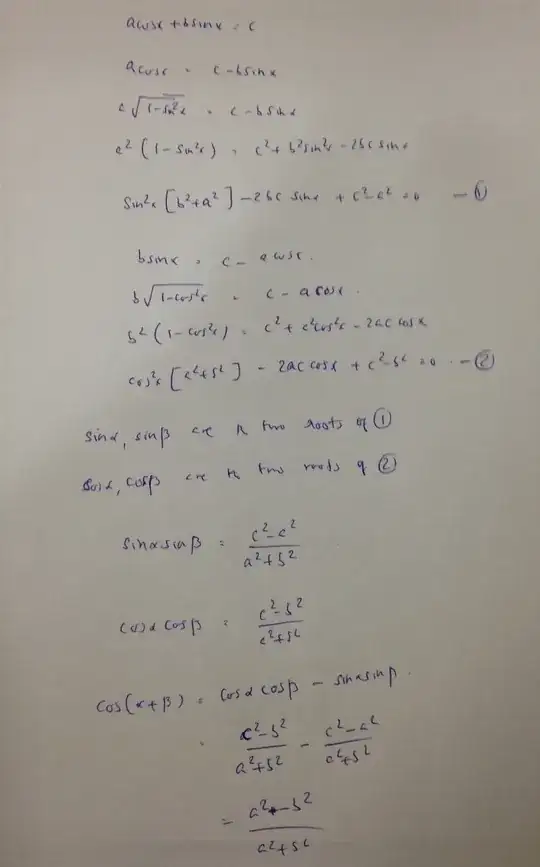If $\alpha$, $\beta$ are the roots of the equation $a\cos x+b\sin x=c$, then prove that $\cos(\alpha+\beta)=\dfrac{a^2-b^2}{a^2+b^2}$
My Attempt $$ b\sin x=c-a\cos x\implies b^2(1-\cos^2x)=c^2+a^2\cos^2x-2ac\cos x\\ (a^2+b^2)\cos^2x-2ac\cos x+(c^2-b^2)=0\\ \implies\cos^2x-\frac{2ac}{a^2+b^2}\cos x+\frac{c^2-b^2}{a^2+b^2}=0 $$ $$ a\cos\alpha+b\sin\alpha=c\implies a\cos^2\alpha\cos\beta+b\sin\alpha\cos\alpha\cos\beta=c\cos\alpha\cos\beta\\ a\cos\beta+b\sin\beta=c\implies a\sin\alpha\sin\beta\cos\beta+b\sin\alpha\sin^2\beta=c\sin\alpha\sin\beta\\ c\cos(\alpha+\beta)=a\cos\beta+a\sin\alpha\cos\beta.(\sin\beta-\sin\alpha)+b\sin\alpha+b\sin\alpha\cos\beta(\cos\alpha-\cos\beta)\\ $$
I think its getting complicated to solve now. What is the simplest way to solve this kind of problems?

